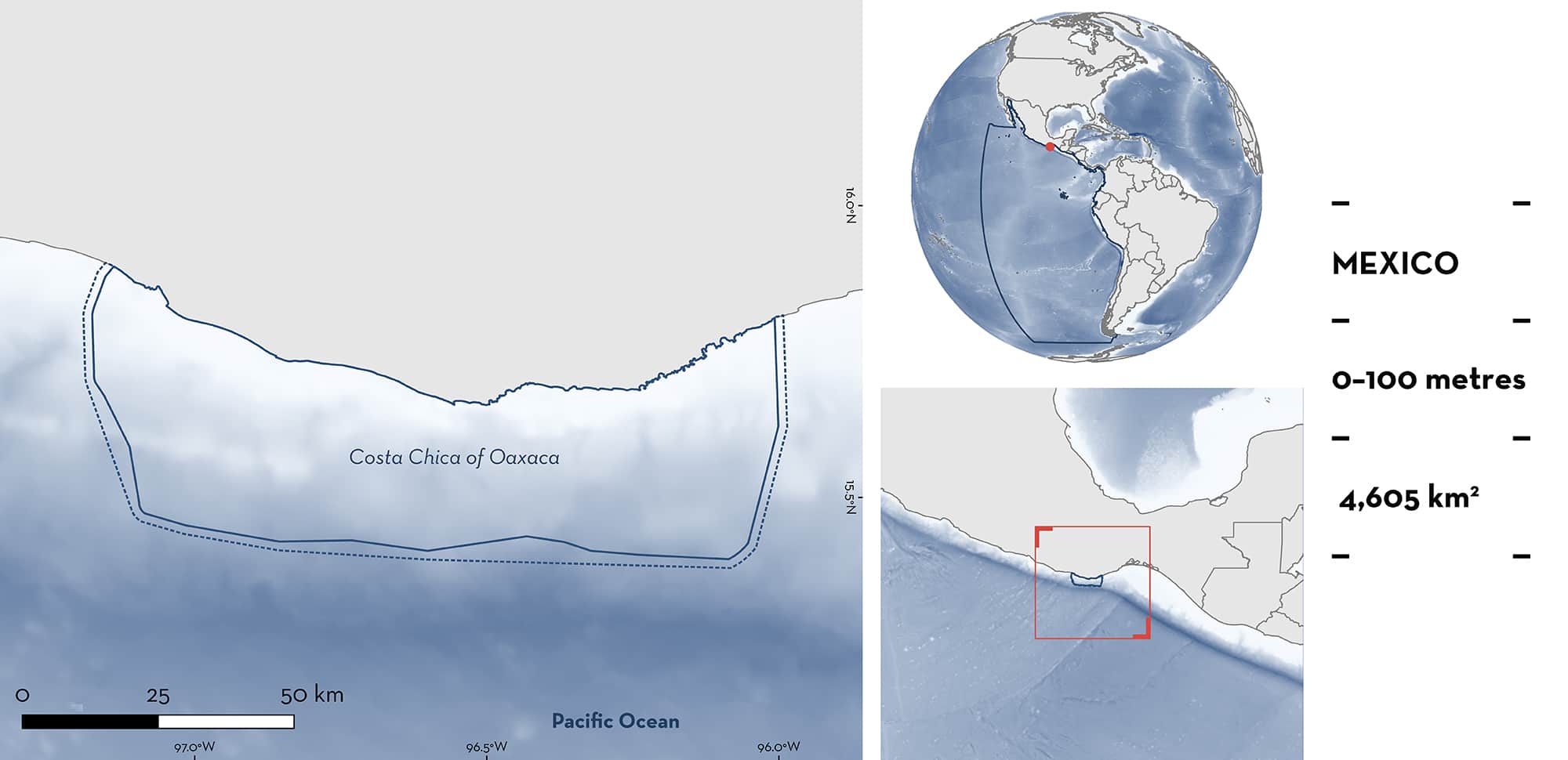ISRA FACTSHEETS
ISRA FACTSHEETS
CENTRAL AND SOUTH AMERICAN PACIFIC REGION
Costa Chica of Oaxaca
Summary
Costa Chica of Oaxaca is located between Bahía de Huatulco and Puerto Escondido in Mexico. It includes the mouths of three main rivers that input freshwater and is characterised by mangroves and multiple bays along the coast with sand and muddy benthos. The area is highly productive due to the influence of distinctive strong-winds (‘tehuanos’) that produce upwelling events and the input of freshwater during the rainy season. Within this area there are: threatened species (e.g., Scalloped Hammerhead Sphyrna lewini); and reproductive areas (e.g., Silky Shark Carcharhinus falciformis).
Download factsheet
Costa Chica of Oaxaca
DESCRIPTION OF HABITAT
Costa Chica of Oaxaca extends from Bahía de Huatulco, Oaxaca to the border with the state of Guerrero in Mexico. Situated within the Pacific Central-American Coastal Large Marine Ecosystem, the area is located between Bahías de Huatulco and Puerto Escondido. This area includes the mouths of the Copalita, Tonameca, and Rio Grande rivers, and the bays of Puerto Ángel and Talogunda. It also includes coastal lagoons such as Chacahua-Pastoría and Corralero. The presence of hurricanes (boreal summer) and the influence of strong-winds (‘tehuanos’) from the Gulf of Tehuantepec during the boreal winter produce high productivity (Pennington et al. 2006). The rainy season (June–October) is linked to the highest temperatures in the area (Alejo-Plata et al. 2008).
This Important Shark and Ray Area is delineated from inshore and surface waters (0 m) to a depth of 100 m based on the local occurrence of Qualifying Species.
CRITERION A
VULNERABILITY
Two Qualifying Species considered threatened with extinction according to the IUCN Red List of Threatened SpeciesTM regularly occur in the area. These are the Critically Endangered Scalloped Hammerhead (Rigby et al. 2019) and the Vulnerable Silky Shark (Rigby et al. 2021).
CRITERION C
SUB-CRITERION C1 – REPRODUCTIVE AREAS
Costa Chica of Oaxaca is an important reproductive area for two shark species: Silky Shark and Scalloped Hammerhead.
Based on fisheries landing monitoring from 2001–2006 (n= ~3,000), Silky Sharks use the area as a nursery. Neonates with umbilical scars represented 5.2% of landings for the species, while juveniles (including young-of-the year) represented 72%. Neonates were caught between May–June, and young-of-the-year occur from July–August (Alejo-Plata et al. 2006, 2007; Cruz-Jiménez 2010). Silky Sharks also use the area for parturition, as there is a regular presence of neonates and near-term embryos found in pregnant females (Alejo-Plata et al. 2016). Neonates and young-of-the-year represented 20% of all total landings for the species in Oaxaca (2013–2019; Alatorre-Alba et al. 2021).
Scalloped Hammerhead neonates and young-of-the-year comprised 64% of landings for the species in the area from 2001–2006. These life stages are commonly found between July–September. Their occurrence along with the presence of juveniles (between September–October) is associated with shallow waters (< 20 m) and increases in temperature. This occurrence was reported over several years, supporting the presence of a nursery area (Alejo-Plata et al. 2006, 2007). Furthermore, these life stages are still caught by artisanal fisheries (2013–2015; Morales-Pacheco et al. 2016).
Download factsheet
SUBMIT A REQUEST
ISRA SPATIAL LAYER REQUEST
To make a request to download the ISRA Layer in either a GIS compatible Shapefile (.shp) or Google Earth compatible Keyhole Markup Language Zipped file (.kmz) please complete the following form. We will review your request and send the download details to you. We will endeavor to send you the requested files as soon as we can. However, please note that this is not an automated process, and before requests are responded to, they undergo internal review and authorization. As such, requests normally take 5–10 working days to process.
Should you have questions about the data or process, please do not hesitate to contact us.


